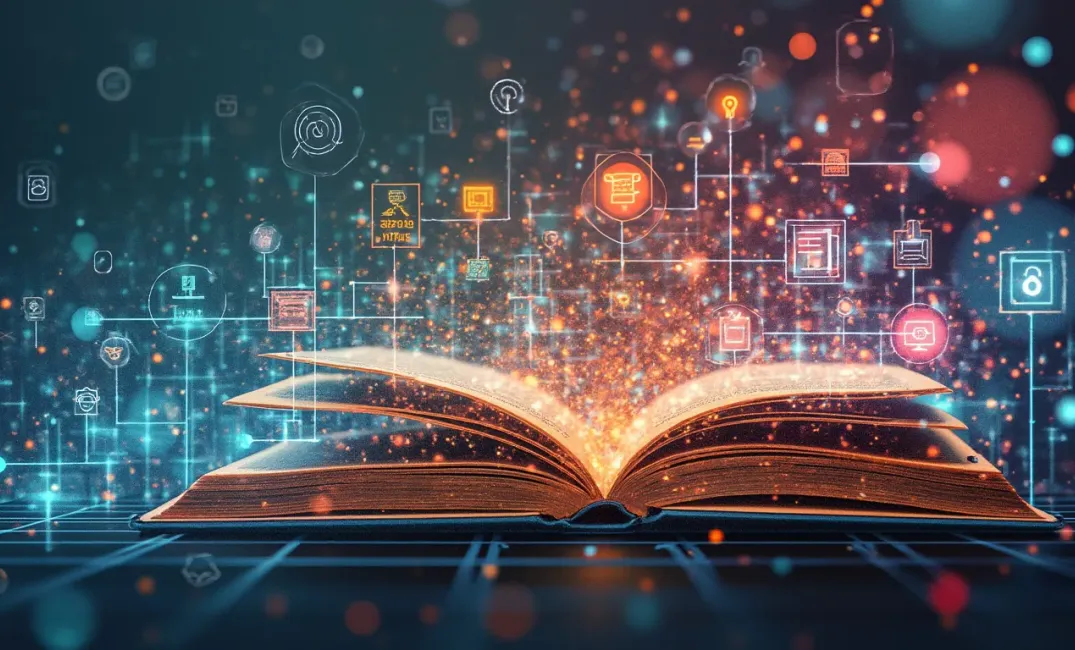Introduction: The Integral Role of Communication in Human Civilization
Communication forms the foundation of human society. From primal gestures and sounds to complex digital networks, communication has been the conduit for sharing knowledge, culture, and emotions. This entry delves into the journey of human communication—exploring its diverse forms, historical evolution, and profound impacts on civilizations. The narrative of communication is one of innovation and adaptation, reflecting humanity’s social nature and technological ingenuity.
"The limits of my language mean the limits of my world." — Ludwig Wittgenstein
The Dawn of Communication: Primal Beginnings and Language Development
Primal Gestures and Early Symbols
- Visual and Vocal Signals: Early humans relied on gestures, facial expressions, and vocal sounds to convey messages. This non-verbal communication was critical for survival and cooperation within social groups.
- Cave Paintings and Early Symbols: With the advent of symbolic expression, humans began using cave paintings to depict experiences, record events, and share communal stories. These symbols laid the groundwork for future written communication.
The Evolution of Spoken Language
- Development of Structured Language: The transition from simple vocalizations to structured languages marked a significant milestone in human evolution. Language enabled complex social structures, culture, and collaborative problem-solving.
- Diverse Linguistic Families: Languages diversified across regions, reflecting migration patterns and cultural developments. This linguistic variety enriched cultural identity and enabled intricate societal interactions.
The Written Word: Capturing Thoughts and Narratives
The Birth of Writing Systems
- Cuneiform and Hieroglyphs: Some of the earliest writing systems, such as Mesopotamia's cuneiform and Egypt's hieroglyphs, emerged to record transactions, laws, and religious texts—transforming communication by preserving ideas across time.
- Chinese Characters and Alphabetic Innovations: The Chinese script involved thousands of characters, illustrating intricate concepts, while alphabetic systems like Greek and Latin simplified writing, increasing accessibility and literacy.
The Impact of Written Communication
- Codifying Laws and Knowledge: Written language facilitated the codification of laws and preservation of knowledge across fields such as science, philosophy, and literature, fostering intellectual progress and cultural transmission.
- Social and Political Implications: Written records enabled the rise of bureaucratic states, facilitated trade, and enhanced governance through the orderly dissemination and storage of information.
Oral Traditions and Cultural Narratives
The Power of Orality
- Storytelling and Cultural Identity: Oral traditions preserved cultural narratives, myths, and histories, passing wisdom and values through generations. Storytelling maintained cultural identity, especially in non-literate societies.
- Socratic Dialogues and Verbal Artistry: Philosophers like Socrates utilized oral dialogue to explore ethical and metaphysical questions, emphasizing the value of spoken word in nurturing critical thought and reflective discourse.
The Interplay of Oral and Written Traditions
- Adaptation and Coexistence: In many cultures, oral and written traditions coexisted, enriching the tapestry of human expression. Epics like the Iliad transitioned from oral to written forms, preserving their grandeur for posterity.
- Impact on Cognitive Development: Engagement with both oral and written forms of communication was pivotal in enhancing cognitive skills, nurturing memory, and advancing literacy.
The Printing Revolution: Democratizing Knowledge
Gutenberg’s Legacy
- The Invention of the Printing Press: Johannes Gutenberg's movable-type printing press revolutionized the production of texts, drastically reducing costs and increasing the availability of books.
- Cultural and Intellectual Flourishing: The printing press catalyzed the spread of ideas, fueling movements like the Renaissance and Reformation by democratizing access to knowledge and fostering critical discourse.
The Spread of Literature and Ideas
- Scientific and Enlightenment Texts: Printed works enabled the rapid dissemination of scientific discoveries and philosophical ideas, challenging existing norms and inspiring societal transformations.
- Literacy and Education: Widespread availability of printed materials increased literacy rates, enabling broader participation in intellectual and cultural life across socio-economic classes.
The Digital Revolution: Redefining Connectivity
Digital Communication Emergence
- The Rise of the Internet: The Internet introduced a global communication platform, transcending geographical boundaries and enabling instant information exchange.
- Social Media and Digital Networks: Social media transformed personal and professional communication, enabling community building, advocacy, and real-time interaction on a global scale.
Challenges and Opportunities in the Digital Age
- Information Overload and Disinformation: The digital age presents challenges related to information authenticity, the spread of misinformation, and the ethical use of personal data.
- Digital Inclusivity and Accessibility: Ensuring equitable access to digital communication tools is crucial for bridging the digital divide and fostering inclusive participation in the digital economy.
The Future of Human Communication: Emerging Trends and Technologies
Technological Innovations on the Horizon
- Artificial Intelligence in Communication: AI technologies are augmenting human communication with language processing, translation, and personalized engagement tools, transforming interactions across sectors.
- Virtual and Augmented Realities: VR and AR technologies promise immersive communication experiences, reshaping education, entertainment, and collaborative work environments.
Ethical and Philosophical Considerations
- Privacy and Surveillance Concerns: The ethical implications of digital communication tools, including privacy rights and surveillance, require careful consideration and regulation.
- Reimagining Human Interaction: As communication technologies evolve, humans must navigate changes in social dynamics, identity, and community building, balancing convenience with authentic connection.
Conclusion: Communication’s Enduring Role in Shaping Humanity
"We have two ears and one mouth so that we can listen twice as much as we speak." — Epictetus
The journey of human communication reflects an ongoing narrative of evolution, creativity, and connection. From ancient symbols to cutting-edge digital tools, communication is the thread that weaves human society's fabric, enabling shared understanding, innovation, and cultural growth.
As we embrace future possibilities, the imperative is to harness communication's transformative power ethically and inclusively, fostering dialogue that bridges divides and amplifies voices across diverse perspectives. In doing so, we ensure that the legacy of human communication endures, guiding humanity toward more enriched, connected, and enlightened futures.
PRINTING PRESS, DIGITAL REVOLUTION, COMMUNICATION, ORAL TRADITIONS, LANGUAGE DEVELOPMENT, HISTORY

